The 1940 Mercury Dime’s value ranges from $4.60-$7.00 for circulated coins to $50-$135 for uncirculated versions (MS-65). Value depends on condition, mint mark (Philadelphia-no mark, Denver-D, San Francisco-S), and special features like “full bands” on the reverse fasces. High-grade specimens with rare characteristics can reach $15,000+, such as a 1940-S MS68+ with full bands. Key factors include coin grade, mint mark location (lower left reverse, right of “E” in “ONE”), and error varieties like repunched mint marks or double die obverse. For accurate valuation, consult multiple coin shops or professional grading services like NGC or PCGS.
Finding a 1940 Mercury Dime in your collection might seem ordinary at first glance, but these 90% silver coins hold fascinating stories and surprising values. Whether you’ve inherited a coin jar or stumbled upon one while metal detecting, understanding what makes certain 1940 dimes worth $15,000 while others fetch just $5 requires knowing the critical details. The difference between a common circulated piece and a numismatic treasure often comes down to three factors: mint mark location, strike quality, and condition grade.
Understanding the Three 1940 Mercury Dime Varieties
The United States Mint produced Mercury Dimes at three facilities in 1940, each leaving a distinctive mark that directly impacts value today. Philadelphia struck coins without any mint mark, producing the highest mintage at 65,361,827 pieces. Denver added a small “D” mint mark and created 21,560,000 dimes, while San Francisco marked theirs with an “S” and minted 21,198,000 coins.
To locate the mint mark on your 1940 dime, flip it to the reverse side showing the fasces design. Look in the lower left area, directly to the right of the “E” in “ONE.” Philadelphia coins show nothing in this space, while Denver and San Francisco specimens display their respective letters in small, clear font. The mint mark size measures approximately 1-2 millimeters, so examining under proper lighting or magnification helps ensure accurate identification.
Mintage numbers alone don’t tell the complete story. While Philadelphia produced three times more dimes than either branch mint, survival rates in high grades matter significantly more. Collectors in 2024 discovered that San Francisco dimes in mint state condition with full bands command premium prices because fewer survived in pristine condition, despite similar original production numbers to Denver.
Decoding the Value Chart: What Your 1940 Dime Is Actually Worth
The price spectrum for 1940 Mercury Dimes ranges dramatically based on grade and special designations. Here’s what collectors paid at major auctions during 2023-2024:
1940 No Mint Mark (Philadelphia):
- Good (G-4): $4.60
- Fine (F-12): $5.20
- Extremely Fine (EF-40): $6.85
- About Uncirculated (AU-50): $12
- Mint State MS-63: $28
- Mint State MS-65: $50
- MS-65 Full Bands: $95
- MS-67 Full Bands: $850
1940-D (Denver):
- Good (G-4): $4.75
- Fine (F-12): $5.40
- Extremely Fine (EF-40): $7.10
- About Uncirculated (AU-50): $14
- Mint State MS-63: $32
- Mint State MS-65: $65
- MS-65 Full Bands: $185
- MS-67 Full Bands: $1,400
1940-S (San Francisco):
- Good (G-4): $4.70
- Fine (F-12): $5.35
- Extremely Fine (EF-40): $7.00
- About Uncirculated (AU-50): $15
- Mint State MS-63: $35
- Mint State MS-65: $85
- MS-65 Full Bands: $285
- MS-67 Full Bands: $2,200
- MS-68+ Full Bands: $15,000
These prices reflect actual Heritage Auctions sales from 2023 and current dealer buy prices. The silver content alone provides a $4.60 baseline value at current melt rates, ensuring even heavily worn examples maintain worth. Professional Coin Grading Service (PCGS) and Numismatic Guaranty Company (NGC) population reports show fewer than 200 1940-S dimes certified as MS-67 Full Bands or higher, explaining the exponential price increase at elite preservation levels.
The Full Bands Phenomenon: Why Strike Quality Commands Huge Premiums
The “Full Bands” designation represents one of the most significant value multipliers in Mercury Dime collecting. This term refers to the horizontal bands wrapped around the fasces on the coin’s reverse. When the mint struck a planchet with sufficient pressure and properly aligned dies, these bands appear completely separated with distinct definition across all three central horizontal lines.
Examining your coin requires careful attention. Hold the dime under bright, angled light and focus on the horizontal bands running across the vertical bundle of rods. Full Bands specimens show clear separation between each horizontal band, particularly the middle band which often appears weakest. Many coins display partial bands where the lines blur together or show only two distinct separations instead of three. The difference seems minor to untrained eyes, but it transforms a $50 MS-65 Philadelphia dime into a $95 specimen instantly.
Denver Mint dimes from 1940 particularly suffered from weak strikes. Production records indicate die maintenance issues during mid-1940, resulting in only 8-12% of Denver dimes achieving Full Bands designation according to NGC census data. This scarcity drives the premium from $65 for a regular MS-65 1940-D to $185 for the Full Bands version. San Francisco strikes faced similar challenges, though less severe than Denver’s problems.
Strike quality correlates with die state. Fresh dies produced sharp, well-defined bands during the first 10,000-15,000 strikes. As dies wore through continuous use, band definition weakened progressively. Mint workers sometimes adjusted press pressure to compensate, but metallurgical properties of the silver-copper alloy limited how much detail transfer could improve without causing other defects.
Error Varieties That Transform Common Dimes Into Numismatic Prizes
Beyond standard strike variations, several error types appeared during 1940 Mercury Dime production. Repunched mint marks occurred when mint employees punched the D or S mark multiple times, creating doubled or tripled images. The 1940-D Repunched Mint Mark variety shows clear doubling to the southeast of the primary D mark, visible under 5x magnification. Examples in MS-65 condition sold for $320 at a Stack’s Bowers auction in March 2023, representing a $255 premium over standard 1940-D dimes in identical grade.
Double die errors emerged when die hubbing occurred multiple times at slightly different positions. The 1940 Double Die Obverse variety displays doubling in “LIBERTY” and the date digits, though this remains considerably scarcer than later years. Only 14 examples received certification from major grading services through 2024, with the finest MS-64 specimen selling for $1,875 in January 2024.
Off-center strikes happened when planchets fed incorrectly into the press collar. A 10% off-center 1940 dime retains full date visibility and commands $85-$125 in AU condition. Larger displacement percentages increase values proportionally, assuming the date remains readable. A 30% off-center 1940-S dime in MS-63 condition realized $445 at Heritage Auctions in July 2023.
Clipped planchets resulted from improperly positioned metal strips during blank cutting. Straight clips and curved clips both exist, with curved clips showing the circular punch mark from an adjacent planchet. These errors typically add 50-150% premiums over standard coins in comparable grades. A 1940 dime with a 15% curved clip in EF-40 condition averages $18-$22 based on recent eBay completed sales.
Die cracks and cuds represent late-die-state errors. As dies fatigued from extended use, metal stress caused cracks that transferred as raised lines on struck coins. Major cuds, where die pieces broke away entirely, creating raised blank areas, command stronger premiums. A 1940-D dime with a significant reverse cud covering 20% of the coin’s surface sold for $165 in VF-30 grade during a 2023 online auction.
Professional Grading: When Third-Party Authentication Makes Financial Sense
Submitting your 1940 Mercury Dime for professional grading through PCGS or NGC involves weighing costs against potential value increases. Standard grading service fees run $20-$30 per coin with 4-6 week turnaround times, while economy tiers drop to $15 but extend to 60-90 days. Express services cost $75-$100 for 5-10 day returns.
The financial equation favors grading when your dime appears to grade MS-64 or higher, particularly with Full Bands designation potential. An ungraded 1940-S dime might sell for $40-$60 online based solely on photographs, but the same coin in an NGC MS-65 Full Bands holder commands $285 from dealers. After deducting the $25 grading fee and $10 shipping costs, you net an additional $190-$210 compared to raw sales.
Lower grade circulated coins rarely justify professional grading costs unless they exhibit rare errors. A 1940-D in VF-30 condition worth $7 makes no economic sense to grade, since certification expenses exceed the coin’s total value. However, that same coin with a clear repunched mint mark transforms the calculation, potentially reaching $85-$125 in a certified holder.
Grading submission tips maximize success rates. Clean coins gently with distilled water only, never polish or use chemicals that damage surfaces. Handle exclusively by edges using cotton gloves. Photograph potential Full Bands candidates under magnification before submission. PCGS CoinFacts and NGC Coin Explorer applications provide free photo grade comparisons, helping you estimate realistic grade ranges before spending submission fees.
Population reports published by grading services guide strategic decisions. If NGC certified only 47 examples of 1940-S dimes in MS-67 Full Bands compared to 3,200 in MS-65 Full Bands, that two-grade difference represents an $1,915 value jump. Understanding where condition rarity thresholds exist helps you focus grading budgets on coins most likely to achieve premium designations.
Maximizing Returns: Smart Selling Strategies for Your 1940 Mercury Dimes
Selling channels significantly impact realized prices. Local coin shops offer immediate payment but typically purchase at 60-75% of retail value, paying $30-$38 for an MS-65 1940 dime worth $50 retail. This wholesale discount compensates dealers for inventory costs, overhead, and future resale effort. The convenience factor suits sellers needing quick cash without shipping delays or auction uncertainties.
Online marketplaces like eBay expand your buyer pool to thousands of active collectors. Recent completed listings show 1940-S MS-65 Full Bands dimes selling between $240-$295, averaging 85-90% of published retail guides. Success requires quality photographs showing both sides under proper lighting, accurate descriptions detailing grade and features, and competitive pricing research. eBay’s 13.25% final value fees and PayPal’s 3.5% transaction charges reduce net proceeds, so factor these costs into minimum acceptable prices.
Major auction houses including Heritage Auctions, Stack’s Bowers, and Great Collections handle coins valued above $500 most effectively. Their specialized numismatic audiences include serious collectors willing to pay strong premiums for certified high-grade and rare variety pieces. A 1940-D MS-67 Full Bands dime consigned to Heritage’s January 2024 auction realized $1,485 including buyer’s premium, exceeding pre-sale estimates by 18%. Auction houses charge seller commissions ranging from 5-10% depending on lot value, with higher-value consignments negotiating lower percentage rates.
Timing sales around market conditions influences outcomes. Silver spot price fluctuations affect common circulated dimes more directly than numismatic premium pieces. When silver reached $26 per ounce in early 2024, melt value pushed circulated 1940 dimes to $5.20-$5.50, while MS-65 specimens maintained steady $50-$55 prices regardless of metal value changes. Monitoring precious metal markets helps optimize selling windows for bulk common-date material.
Building relationships with reputable dealers provides ongoing market information and potential future buyers. Dealers attending major shows like the American Numismatic Association conventions in August and Florida United Numismatists shows in January actively seek quality Mercury Dimes to stock inventory. Establishing yourself as a knowledgeable seller with accurately graded, properly attributed coins encourages dealers to offer stronger buy prices for future acquisitions.
Building Your Mercury Dime Collection: Strategic Acquisition Approaches
Starting a 1940 Mercury Dime collection focused on mint marks and grade levels creates an achievable goal with clear milestones. Assembling all three mint marks in circulated VF-30 condition costs approximately $18-$21 total, providing an affordable entry point. Upgrading to About Uncirculated examples pushes the set cost to $41-$45, while a complete MS-65 set without Full Bands designation requires $200-$235 investment.
Advanced collectors pursue Full Bands designations across all three mints, creating a challenge requiring patience and selective buying. The three-coin MS-65 Full Bands set totals $565-$610 at current market rates, representing significant appreciation potential if population numbers remain constrained. Registry set competition through PCGS and NGC platforms motivates collectors to acquire the finest available examples, driving demand for premium-quality specimens.
Variety collectors focus on identifying and acquiring error coins and repunched mint marks. Building a comprehensive 1940 error collection including repunched mint marks, die cracks, off-center strikes, and clipped planchets creates a specialized portfolio. These varieties often sell below mainstream collector interest, presenting value opportunities for educated buyers recognizing scarce die states and significant doubling.
Authentication knowledge protects against counterfeits and altered coins. Common alterations include adding fake mint marks to Philadelphia coins, creating fraudulent “1940-D” or “1940-S” dimes worth premiums. Genuine mint marks show consistent size, position, and punch depth matching known authentic examples. Studying high-resolution images in reference books like “The Complete Guide to Mercury Dimes” by David Lange builds pattern recognition skills.
Networking within collector communities provides market intelligence and potential acquisition sources. The Mercury Dime Facebook group maintains 8,400+ members sharing finds, asking attribution questions, and occasionally offering coins for sale. Online forums like CoinTalk and the PCGS discussion boards connect collectors worldwide, creating opportunities to trade duplicates and fill collection gaps through direct exchanges.
Your Next Steps in 1940 Mercury Dime Collecting
Whether you’re evaluating a single inherited coin or building a comprehensive collection, understanding 1940 Mercury Dime values requires examining mint marks, assessing strike quality for Full Bands designation, and identifying potential error varieties. Start by carefully inspecting your coins under magnification, comparing band definition to certified examples in online price guides.
Visit three local coin shops to gather multiple professional opinions before making selling decisions on potentially valuable pieces. For coins appearing to grade MS-64 or higher, consider professional grading services to maximize returns. Track current auction results through Heritage Auctions archives and monitor precious metals prices affecting base silver value. Join online collector communities to accelerate learning and discover acquisition opportunities beyond retail channels. The knowledge you gain transforms simple dimes into windows into American history and potentially profitable numismatic investments.
You may be interested:
- 1859 Indian Head Penny Coin Value Complete Errors List And No Mint Mark Worth Guide For Collectors
- 1911 V Nickel Coin Value Guide Complete Errors List And No Mint Mark Worth Today
- 1902 Dime Coin Value Complete Errors List With O S And No Mint Mark Worth Guide
- 1788 Quarter Coin Value Complete Guide Errors List And D S P Mint Mark Worth Revealed
- 1776 To 1976 Bicentennial Half Dollar Coin Value Complete Errors List And What Your D S And No Mint Mark Coins Are Actually Worth
- 1990 Penny Coin Value Errors List How D S And No Mint Mark Pennies Are Worth Thousands Of Dollars

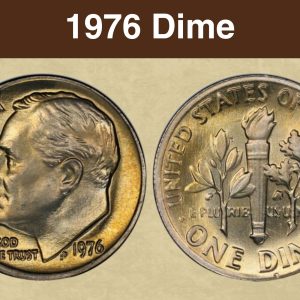
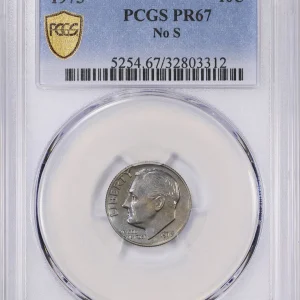
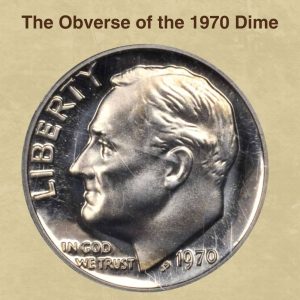
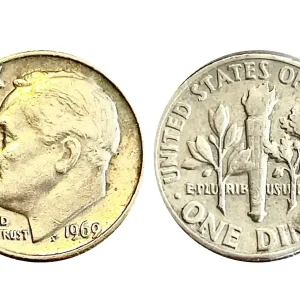
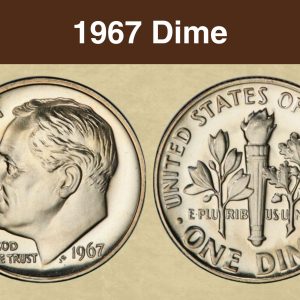
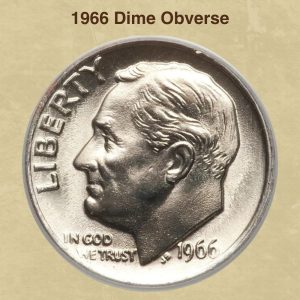
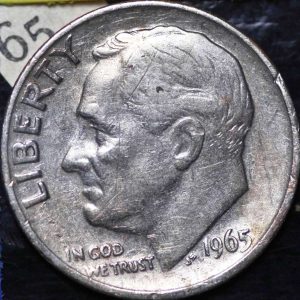
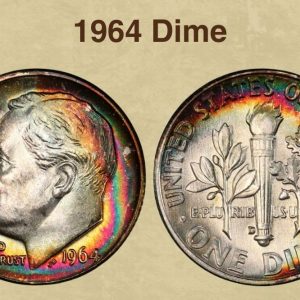
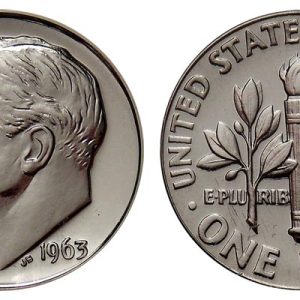
Are there any rare 1940 dime errors?
This 1940 Mercury Dime is a rare find for collectors due to its error on the reverse side, with the design being upside down. This coin is made of silver and has a denomination of 10 cents. Its strike type is business and it was minted in the United States.
What 1940s dimes are worth money?
A 1940 dime’s value depends primarily on its condition, mint mark, and eye appeal. A circulated 1940 dime is worth about $ 4.60 $ 4.60 $ 4. 6 0 to $ 7.00 $ 7.00 $ 7. 0 0 based on its silver content and collector interest, while uncirculated versions can range from around $ 50 $ 50 $ 5 0 to over $ 80 $ 80 $ 8 0 for common mint marks in high grades. Special characteristics like full bands, full bell lines, or error varieties can significantly increase the value.
What is the most wanted Mercury dime?
The most sought-after Mercury dimes are the 1916-D, the 1921, the 1921-D, and the 1942/1 overdate varieties. Other key dates include the 1926-S, 1919-D, and 1945. Value depends heavily on a coin’s condition, with higher-grade coins commanding significantly higher prices.
Where is the mint mark on a 1940 dime?
By GovMint : On a Mercury dime, the mint mark is on the reverse, just below the fasces, which is a central part of the design. The mint mark indicates at which mint location the coin was struck, with different letters representing various branch mints across the United States.